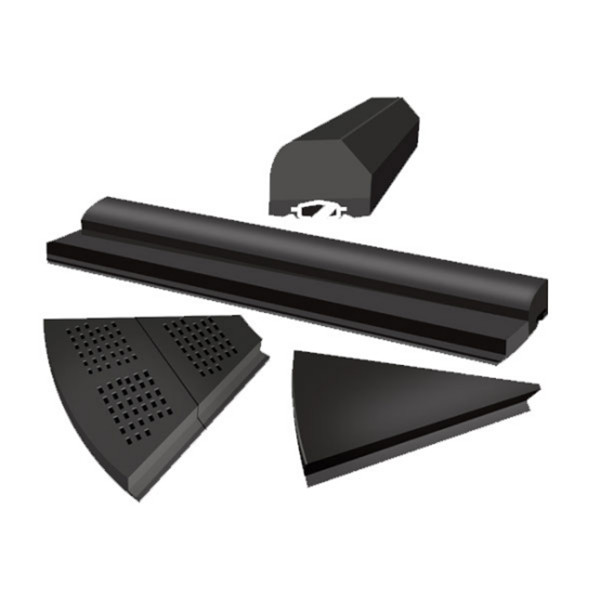U.S. Air Force Airman First Class Christian Teran from the 366th Comm Squadron, Mountain Home Air Force Base, Idaho, sets up Pacstar, a system that enables us to have SIPR and commercial internet during exercise Northern Edge 23-2 at Marine Corps Air Station Iwakuni, Japan, July 3, 2023. NE23 allows the U.S. Joint Force to refine command and control concepts through exercises and experimentation for application in endeavours around the world. (U.S. Air Force photo by Senior Airman Xavier Wilson)
Earlier this year, teams from communication squadrons across Air Combat Command’s Lead wings under the Agile Combat Employment construct tackled exercise Northern Edge 23-2, hosted by the Indo-Pacific Command. Rubber Expansion Joints

ACC communication Airmen put the Radio Frequency Mini-Mesh Network to the test in coordination with Air Mobility Command, Pacific Air Forces, and the U.S. Marine Corps.
Northern Edge is designed to provide high-end, realistic warfighter training, and develop and improve joint interoperability, and enhance combat readiness of participating forces in an environment that allows data to be collected during joint training opportunities. Cyber and communications leaders across the Department of Defense determined that enhancing combat readiness means improving the way warfighters communicate in the field.
The RF Mini-Mesh Network, a capability operationally used by the Marine Corps, allows for secure communication through encrypted Wi-Fi on handheld devices. The Tactical Radio/Tactical Data Link/RF Mesh Network mesh together to create a robust resilient capability with multiple communications paths.
“The RF Mesh Network capability combines multiple networks and signals allowing communications with different aircraft and ground operators all simultaneously,” said retired United States Air Force Col. Lawrence Hager, Director of Staff of Cyberspace and Warfighting Communications. “The system automatically translates and dynamically routes the waveforms. The result is an automated Primary, Alternate, Contingency, Emergency communications plan that does not require a human to translate and route the radio traffic.
"The system utilizes rugged handheld devices connected via secure encrypted Wi-Fi flexibility and agility at the tactical edge with multiple users now able to leverage the RF Mesh network to send data and information from the tactical edge to anywhere on the planet.”
As the cyberspace domain continues to advance at an unprecedented rate, the challenges that come with it grow in complexity. The RF Mesh Network capability maintains consistent secure communication in a “contested, denied, degraded environment” saturated by security risks.
“RF Mesh Network provides a robust, redundant communications capability that allows our airmen to use the disparate tactical radios and data links as an integrated, automated system,” said Hager. “The Wi-Fi connected rugged handheld devices improve flexibility and agility and allow warfighters communicate on the go with the same standard technology they use in everyday life.”
The ACE construct emphasizes the requirement for Airmen, equipment, and capabilities to be flexible and adaptable in any environment. As the Northern Edge exercise series demonstrated, this advancement implements the need for less equipment and personnel to execute operations.
“The Lead Wing Base communications Airmen were employed to provide organic comms for their own commander in a deployed environment,” Lt. Col. Chad A. Young, Air National Guard commander of Combat Communications. “This will aid the warfighter by leveraging daily working relationships, easing logistics by deploying Airmen from a common location, and providing dynamic routing to maximize comms availability.”
During the Northern Edge exercises, the Combat Communications Airmen and Marines were challenged to leverage their knowledge and expertise with the RF Mesh Network capability to close the gap for Joint All Domain Command and Control interoperability across the INDOPACOM area of responsibility.
“The combat comm Airmen configured the RF Mesh Network and the Small Tactical Terminal Link16 radio to connect wirelessly to Marine Air/Ground Tablets,” said Master Sgt. Brian Janssen, Air National Guard RF Transmissions NCOIC. “This capability provided secure, near-real-time, air pictures to the Wing Operation Center as well as a secure messaging capability to and from the warfighter aircraft for C2.”

Slurry Pump Wear Parts The Department of the Air Force charged Airmen and Guardians with the induction of ACE, the intent was to complicate near-peer adversaries’ targeting process. The ability to effectively share information from one Airmen on the ground to the next, to home stations and to warfighters in the air is becoming increasingly critical to successfully and safely conduct operations. To protect and preserve the cyber and information environment the Air Force and the DOD continue to Increase interoperability and communication capabilities.